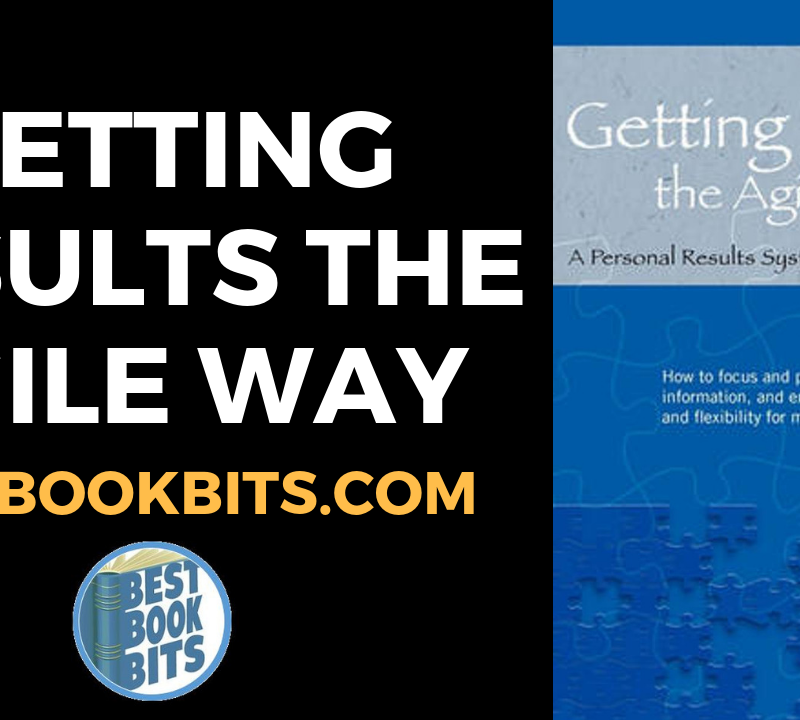★DOWNLOAD THIS FREE PDF SUMMARY HERE
? MY FREE BOOK TO LIVING YOUR DREAM LIFE”
? SPONSOR BESTBOOKBITS BY USING PATREON
? SUPPORT BESTBOOKBITS BY CLICKING THE LINKS BELOW
- 150 PDF Summaries
- Coaching Program
- Subscribe to My Channel
- Website
- Spotify
- Book Club
- Mailing List
The Book in Three Sentences
1. Procrastination is our voluntary delay of an intended action
2. Not all delay is procrastination
3. In order to overcome procrastination, we need to understand our reluctance to act when it is in our best interest to act
The Five Big Ideas
1. Categorize which delays in your life are procrastination
2. Make predecisions using implementation intentions
3. Just get started
4. When working online, block distracting websites like Facebook (I recommend StayFocused for Google Chrome)
5. Use willpower strategically
Solving the Procrastination Puzzle Summary
When we procrastinate, we voluntarily delay an intended action despite the knowledge that this delay may harm us in terms of the task performance or even just how we feel about the task or ourselves.
Pychyl believes there are many types of delay in our lives and we need to learn to appreciate this. Some are not only necessary; they’re wise.
To understand the procrastination puzzle—that voluntary but needless delay in our lives that undermines our goal pursuit—we need to understand our reluctance to act when it is in our best interest to act.
Pychyl’s initial strategy for change is to begin categorizing in your own mind which delays in your life are procrastination.
Exercise: Write down the tasks, projects, activities, or “things” in your life on which you tend to procrastinate. Next to each, jot down what emotions and thoughts come to mind when you think of each of these moments of procrastination. When you have finished your list, look for patterns in the emotions or thoughts involved.
“Procrastination is failing to get on with life itself.”
People express two kinds of regret in their grief over the loss of a loved one: regrets of commission and omission. Unsurprisingly, the regrets of omission related to our procrastination are found to be the most troubling in the grieving process.
“When we learn to stop needless, voluntary delay in our lives, we live more fully.”
Exercise: Next to each of the tasks or goals you wrote down earlier, note how your procrastination has affected you in terms of things such as your happiness, stress, health, finances, relationships, and so on. If possible, discuss this with a confidante or a significant other in your life who knows you well. Further, add notes about why this goal or task is important to get done, as well as the benefits of acting now as opposed to later.
Mantra: I won’t give in to feel good. Feeling good now comes at a cost.
We fail to self-regulate (control ourselves) because we “give in to feel good.”
Pychyl says it’s important to recognize that giving in to feel good is at the heart of self-regulation failure, and it is important to develop strategies for change.
When faced with a task where our natural inclination is to say, “I’ll do this later” or “I’ll feel more like this tomorrow,” we need to stop and recognize that we are saying this in order to avoid the negative emotions we are feeling right now.
We need to recognize that this task makes us feel awful and what we are trying to do is to run away from these feelings.
Emotional intelligence is the ability to effectively identify and utilize emotions to guide behavior.
The first step at the moment of procrastination is to stay put.
Use an implementation intention to deal with negative emotions, for example, “IF I feel negative emotions when I face the task at hand, THEN I will stay put and not stop, put off a task, or run away.”
Forecasting our future mood is known as affective forecasting.
The main idea behind affective forecasting is that we have a bias when we predict future mood (affective) states in relation to positive and negative events.
★DOWNLOAD THIS FREE PDF SUMMARY HERE
? MY FREE BOOK TO LIVING YOUR DREAM LIFE”
? SPONSOR BESTBOOKBITS BY USING PATREON
? SUPPORT BESTBOOKBITS BY CLICKING THE LINKS BELOW
- 150 PDF Summaries
- Coaching Program
- Subscribe to My Channel
- Website
- Spotify
- Book Club
- Mailing List
There are two biases that influence procrastination:
• Focalism. Our tendency to underestimate the extent to which other events will influence our thoughts and feelings in the future.
• Presentism. Our tendency to put too much emphasis on the present in our prediction of the future.
When we intend a future action, our affective state is often particularly positive.
“When we are tempted to procrastinate on a current intention or task, thinking that we’ll feel more like it tomorrow, we need to stop and think, ‘No, that’s a problem with my forecasting. There is a good chance I won’t feel more like it tomorrow.’ AND it is important to add the following: ‘My current motivational state does not need to match my intention in order to act.’”
Acknowledging that our motivational state is neither necessary nor sufficient to ensure action, we can simply remind ourselves of our personal goals (a form of self-affirmation) and “just get started.”
Let go of the misconception that your motivational state must match the task at hand.
When you start to act on your intention as intended, you’ll see your attitude and motivation change.
We need to consider the biases in our thinking including our tendency to:
• Discount future rewards in relation to short-term rewards
• Underestimate the time things will take and overestimate how much we can do
• Prefer tomorrow over today
• Self-handicap to protect self-esteem
• Think irrationally about the task at hand and our ability to accomplish the task
• Manufacture our own happiness by changing our thinking to be consistent with our behavior
A common cause of procrastination is our intransitive preference for approaching work.
Here’s an example:
“Imagine a task is due on Friday. It is now Monday morning. It is preferable to work on this task Tuesday as opposed to Monday. In other words, the preference for Tuesday is greater than the preference for Monday. Tuesday arrives. Ah, it’s preferable to work on this on Wednesday as opposed to Tuesday. Wednesday arrives. Again, it’s preferable to work on this Thursday instead of Wednesday. So far, so good; these are transitive relations. Then Thursday arrives. Oops, we think, it is now preferable that we had begun on Monday.”
Cognitive dissonance occurs when our actions and beliefs or even two beliefs are in conflict.
When we intend to take action and then don’t, we experience cognitive dissonance.
Here are a few typical reactions that researchers have catalogued as responses to cognitive dissonance (and ways that we reduce this dissonance):
• Distraction. We divert our attention away from dissonant cognitions and avoid the negative affective state caused by dissonance.
• Forgetting. This can be in two forms, passive and active. Passive is often the case with unimportant thoughts, while we may have to actively suppress important cognitions that are causing dissonance.
• Trivialization. We change our beliefs to reduce the importance of the dissonance-creating thoughts or beliefs.
• Self-affirmation. We create a focus on our core values and other qualities that reasserts our sense of self and integrity despite the dissonance.
• Denial of responsibility. This allows us to distance ourselves as a causal agent in the dissonance.
• Adding consonant cognitions. Seeking out new information that supports our position (e.g., “this isn’t procrastination”; “I need more information before I can do anything on this project”).
• Making downward counterfactuals. Rationalizing “it could have been worse” so we just feel better in the short term.
• Changing behavior to better align with our beliefs and values. This means that we would act instead of procrastinating, although changing one’s behavior requires effort and is often not the most convenient way to reduce dissonance.
Recognizing that it is human nature to have these biases, and more important, identifying specifically what we tend to do can be the beginning of change.
Once we start a task, it is rarely as bad as we think. Pychyl’s research found getting started changes our perceptions of a task. It can also change our perception of ourselves in important ways.
“When you find yourself thinking things like: ‘I’ll feel more like doing this tomorrow,’ ‘I work better under pressure,’ ‘There’s lots of time left,’ ‘I can do this in a few hours tonight’ … let that be a flag or signal or stimulus to indicate that you are about to needlessly delay the task, and let it also be the stimulus to just get started.”
There are two main approaches to predecisions regarding potential distractions:
1. Reducing the number of distractions before we begin to work.
2. Using implementation intentions to help us decide ahead of time what we will do when distractions, obstacles, or setbacks arise.
Implementation intentions have effects over and above our motivation to succeed.
Willpower is a limited resource that you need to use strategically.
“It is exactly when we say to ourselves ‘I’ll feel more like it tomorrow’ that we have to stop, take a breath, and think about why we intended to do the task today. Why is it important to us? What benefit is there in making the effort now? How will this help us achieve our goal? From there, if we can muster the volitional strength for one more step, that is, to ‘just get started,’ we will find that we had more self-regulatory strength in reserve than we realized.”
“An implementation intention may well be the thing that gets you to exercise in the evening, even though you usually feel much too tired to begin.”
“Don’t get hypoglycemic; your self-regulation will suffer. Keep a piece of fruit (complex carbohydrate) handy to restore blood glucose.”
So much of our ability to self-regulate depends on our motivation.
Procrastination draws on our ability to deceive ourselves.
Minimizing distractions is an important part of curbing our online procrastination.
★DOWNLOAD THIS FREE PDF SUMMARY HERE
? MY FREE BOOK TO LIVING YOUR DREAM LIFE”
? SPONSOR BESTBOOKBITS BY USING PATREON
? SUPPORT BESTBOOKBITS BY CLICKING THE LINKS BELOW
- 150 PDF Summaries
- Coaching Program
- Subscribe to My Channel
- Website
- Spotify
- Book Club
- Mailing List













